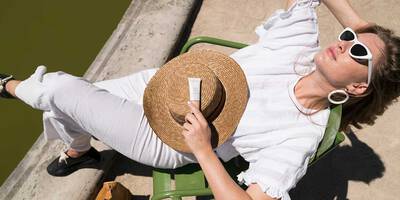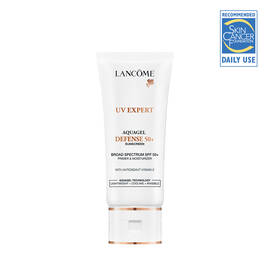Summer & SPF: Our Definitive Guide to Sunscreen
Article Published: 8 October 2022
Everything you need to know about sunscreen: how to protect your skin all summer with sunscreen, including what SPF stands for and the difference between UVA and UVB rays.

From warmer weather to longer days, summer brings a lot of good things. It’s the season of vacations and sunshine, which is why your usual skin care and makeup looks may need an update. Sunscreen should be a given, followed by lightweight textures and makeup that contains SPF — and is easy to pack, of course.
What Does SPF Stand For?
SPF stands for Sun Protection Factor and is a measure of a sunscreen’s ability to protect from UVB rays from damaging the skin. A higher SPF doesn’t mean it protects skin for a longer amount of time; rather, that means it can block a slightly higher percentage of rays relative to unprotected skin. Look for the label “broad spectrum” to ensure it covers both UVA and UVB.
What’s The Difference Between UVA and UVB?
UVA rays, which have a longer wavelength, are associated with aging, while UVB rays have a shorter wavelength are responsible for sunburns and most skin cancers.
When is Sun Damage Most Likely?
The higher the sun, the stronger the rays. If you’re out in midday, you may need a higher SPF to help protect you along with taking other sun protection measures, such as staying in the shade and wearing a hat or sun-protective clothing.
Do I Need Sunscreen if I Have Dark Skin?
Everyone should always wear sunscreen if they will be exposed to the sun, including people of color. While melanin, the pigment in skin, does offer some natural protection from sun damage and skin cancer risk — leading to a false sense of immunity — it’s nowhere near the minimum SPF 30 recommended by the American Academy of Dermatology. Those of all skin tones can develop skin cancer. Learn more about sunscreen for dark skin.
How Much Sunscreen Should I Apply?
Apply sunscreen to any skin on both face and body that isn’t covered by clothing — for most adults, that’s about the amount in a shot glass. You should apply it to dry skin about 15 minutes before going outside.
How Long Does Sunscreen Last?
The protection of sunscreen lasts about two hours, which is why dermatologists and FDA recommend reapplying after that. That timeline gets shorter if you introduce anything that can wash it away, like sweat or jumping in the pool. (There’s no such thing as waterproof sunscreen, and while some may be labelled as water-resistant, it’s only for a short period of time.) The bottom line: If you’ve just gone for a run or swim, you should apply immediately after drying off — and rinse and repeat, literally, as needed.
What Is the Difference Between Mineral Sunscreen Vs. Chemical Sunscreen?
There are two types of sunscreens: mineral and chemical. Chemical sunscreens use ingredients, such as oxybenzone and avobenzone, that sink into the skin and absorb the UV energy released by the sun. (Think of them as a sponge for sunlight.) Mineral sunscreens, also known as physical sunscreens, contain particles that sit on the skin’s surface, creating a shield and reflecting away UV rays. Among these are sunscreens with zinc oxide and titanium dioxide.
Is mineral sunscreen better than chemical sunscreen?
The best choice really depends on what you’re looking for, because they both have pros and cons. Chemical sunscreens are absorbed by skin, so you often get more even coverage with it. Plus, they’re less likely to leave any chalky residue, and are therefore easier to blend in — particularly for those with darker skin tones.
Mineral sunscreens are better for those with sensitive skin, but, because they form a physical barrier on the skin’s surface, need to be applied more thoroughly and evenly. Sunscreens with zinc oxide and titanium dioxide are also more likely to leave a sheen on skin. Still, it comes down to a matter of preference.
Should I use Sunscreen Spray or Lotion?
As for choosing a formula, you can choose between sprays or lotions. You may choose based on your preference. However, it may be difficult to tell how well sunscreen sprays cover your skin, so you may miss spots and not even realize it. Plus, the wind could blow some sunscreen away if you’re misting it on outside. If you already have a sunscreen spray, your best bet is to spray it into your hand and rub it into skin yourself instead.
Our Sunscreen Recommendations
UV Expert Sunscreen Aquagel Defense SPF 50 Priming Moisturizer: If you hated the chalky, greasy sunscreen formulas of years past, you’re in luck — because this moisturizer is the opposite. Not only does it offer antioxidant vitamin E and a lightweight texture, this sunscreen also has SPF 50.


